Introductory Astronomy for Undergraduates
Solar System,Planets and Exoplanets
The Solar System, in which we live, consists of the Sun as its central star, eight planets with their moons and several dwarf planets. Together with hundreds of thousands of asteroids (boulders from the size of small pebbles to the size of a dwarf planet) and comets, these celestial bodies orbit the Sun.
The Earth is a very special planet among these celestial bodies. It is our home! In order to understand its uniqueness, students need to compare the Earth to the other planets in the Solar System. The Earth is located about 150 million kilometers from the Sun, giving a temperature that is exactly right for liquid water to be present on the surface, unlike on other planets. This proved crucial for the development of life!
The Solar System as a whole is part of the Milky Way galaxy, a collection of about 200 billion stars that are arranged in a spiral, along with gas and dust. Billions of these stars have planets and these, in turn, have moons. This suggests that we are probably not alone in the Milky Way, but the distances between the stars are so big that a visit to another world would be very difficult.
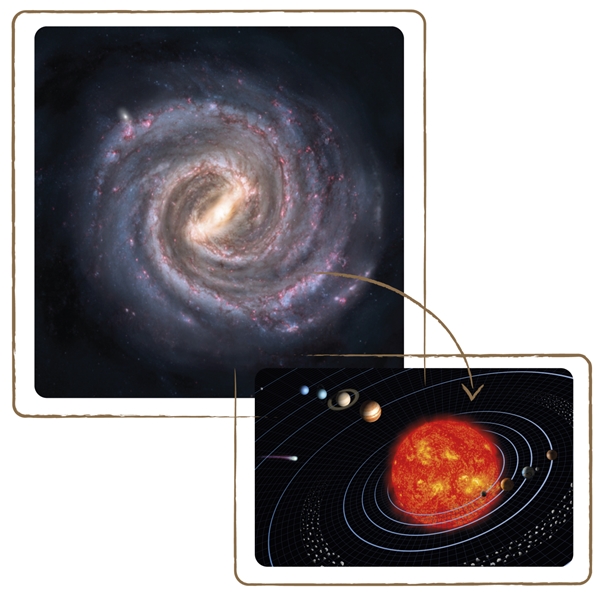
Credit: Wikimedia Common
Even the star nearest to us, Proxima Centauri, is 4.22 light years
(i.e., over 40 trillion kilometres) away from us. This is so distant
that a journey there would take generations of human lives.
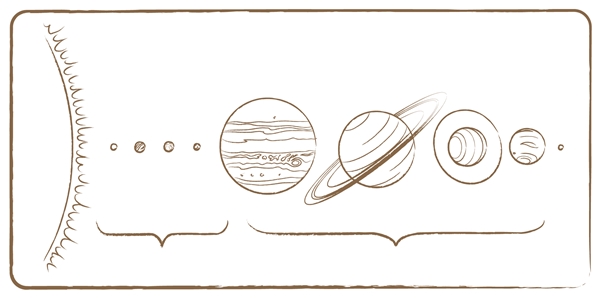
Credit: UNAWE / C.Provot
Planets that orbit stars other than our Sun are called extrasolar
planets or exoplanets for short. Astronomers have already discovered
more than 3500 of these exoplanets and regularly discover more. We can
categorise the planets of our Solar System into two types: rocky
planets, which are nearest to the Sun and have a solid surface, and gas
giants, which are farther from the Sun and are more massive and mainly
composed of gas. Mercury, Venus, Earth and Mars appear in the former
category, and Jupiter, Saturn, Uranus and Neptune make up the latter.
Pluto, our formerly outermost planet, has been considered a dwarf
planets since 2006. Between Mars and Jupiter is a so-called asteroid
belt, which circles the Sun like a ring. It consists of thousands of
smaller and larger boulders. The largest of these have their own names,
just like the planets. One of them, Ceres, is so large that it is
considered a dwarf planet.
The Planets
Planets are spherical bodies orbiting a star. They have sufficient mass to have purged their orbits of all larger and smaller boulders thanks to their gravitational pull. Dwarf planets are also spherical and orbit a star, but they have small masses and therefore such weak gravity that they are not capable of attracting smaller boulders in their vicinity. Currently (in 2016) five dwarf planets have been identified: Ceres, Pluto, Haumea, Makemake and Eris. Moons are often spherical as well, depending on their size, but they orbit planets.
Each of the planets in our Solar System has very specific features. We have summarised them in the fact files below. The following rule of thumb is valid in the Solar System: small planets lie close to the Sun and are made of solid material, while large planets are farther away from the Sun and are mainly composed of gas. This is not necessarily true for planets around other stars, some of which have planets like Jupiter much closer to their star than Mercury is to the Sun in our Solar System.
Rocky Planets
The four rocky planets (Mercury, Venus, Earth and Mars) are very dense (solid) and comparatively small. Their atmospheres are very thin or non-existent (Mercury), with the exception of that of Venus.
Mercury
Mercury is the planet nearest to the Sun. It has no atmosphere and its solid surface, like that of our Moon, is covered with many craters. Mercury orbits the Sun once in just 88 days and has no moons. There are severe temperature differences on its surface: 380° C on the side facing the Sun, and -180° C on the night side! This is because day and night shift very slowly on Mercury, because of its slow spin. Also, there is no atmosphere to trap the heat at night.
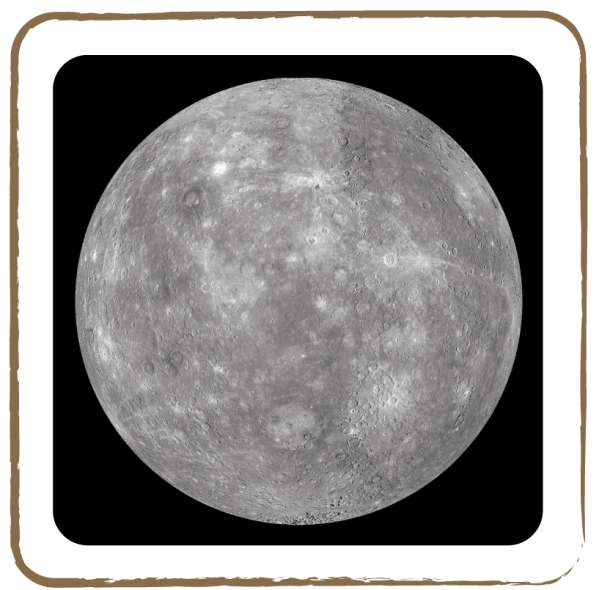
(Credit: NASA)
Venus
Venus is about as large as the Earth. Carbon dioxide (a greenhouse gas) makes up 99% of its atmosphere, which causes sunlight to get trapped in this mega greenhouse. Whether it is day or night, it is always very hot on Venus: almost 500° C! While the other Solar System planets rotate in the same direction, anticlockwise, Venus rotates backwards, clockwise.
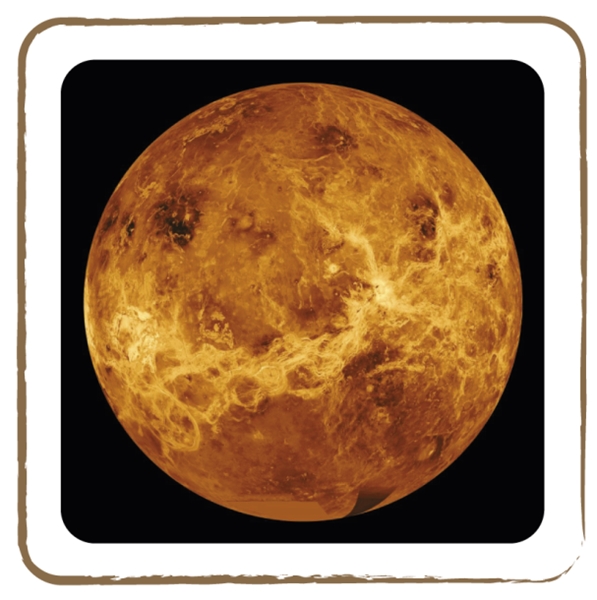
(Credit: NASA)
Earth
Earth is the only planet in the Solar System that has liquid water on its surface, significant amounts of oxygen in the air and moderate temperatures. It orbits the Sun once a year. Its stable axis (inclined 23 degrees) results in seasons. Furthermore, it is the only celestial body on which we have found life so far.
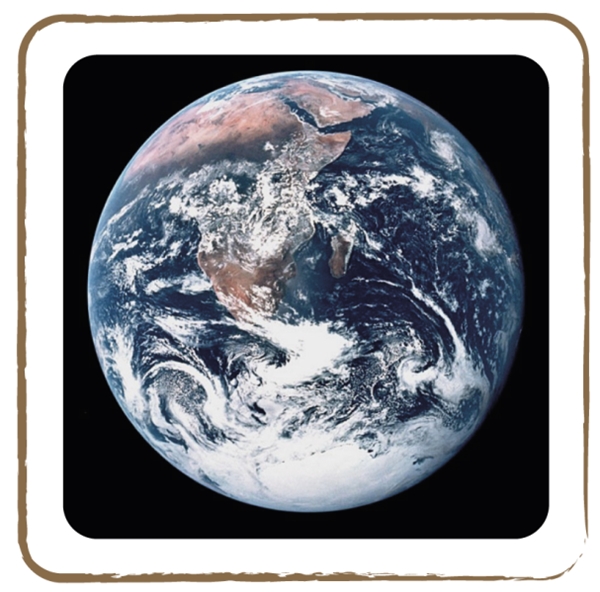
(Credit: NASA)
Mars
Mars is half the size of the Earth. Its reddish colour is caused by iron oxide (rust). It has a very thin atmosphere, which mainly consists of carbon dioxide. One of its special features is its many extinct volcanoes, which reach heights of up to 22,000 metres! Mars has two very small moons and needs about twice as much time as the Earth to orbit the Sun. Like Earth, it also has seasons, as its rotation axis is inclined.
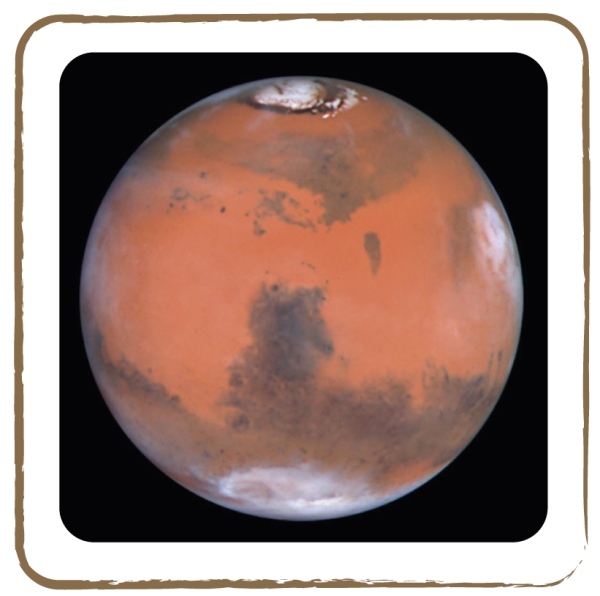
(Credit: NASA)
Gas Giants
The ‘gas giants’ are so-called because they are large compared to other planets and they are composed mostly of gas. They consist of a mighty atmosphere and a relatively small solid core.
Jupiter
Jupiter is the largest planet in our Solar System. Like all giant planets, it mainly consists of gas and has a small solid core and a thin ring system. It has a remarkable red spot on its surface that is twice the size of the Earth! This spot is a huge storm (a cyclone) that has been raging for more than 400 years. It has at least 67 moons (in 2016) and is composed mainly of hydrogen and helium.
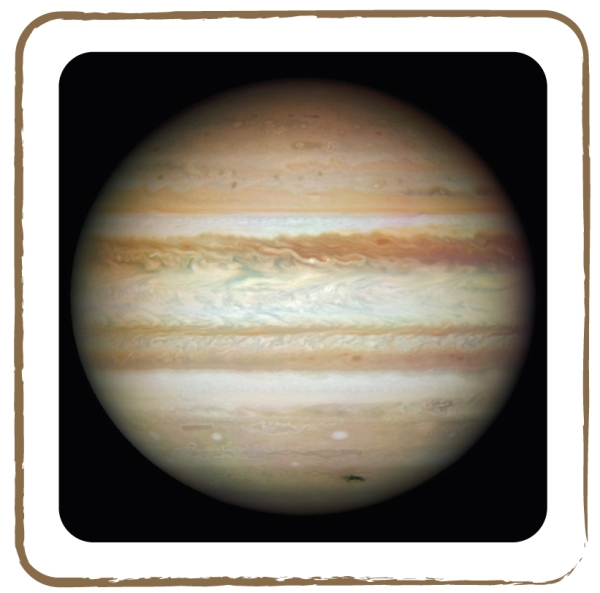
(Credit: NASA)
Saturn
Saturn is surrounded by large rings and therefore earns its nickname ‘Lord of the rings’. These rings consist of numerous small ice grains. Saturn’s atmosphere has a fairly low density: Saturn is the only planet in the Solar System that could float on water. It has many moons: more than 60 (62 in 2016) and other unnamed ‘moonlets’.
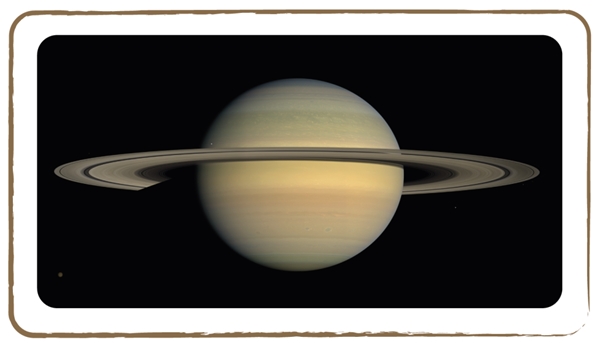
(Credit: NASA)
Uranus
Uranus has a few thin rings. Its surface looks very smooth and barely shows any structure. It has 27 known moons (2016).
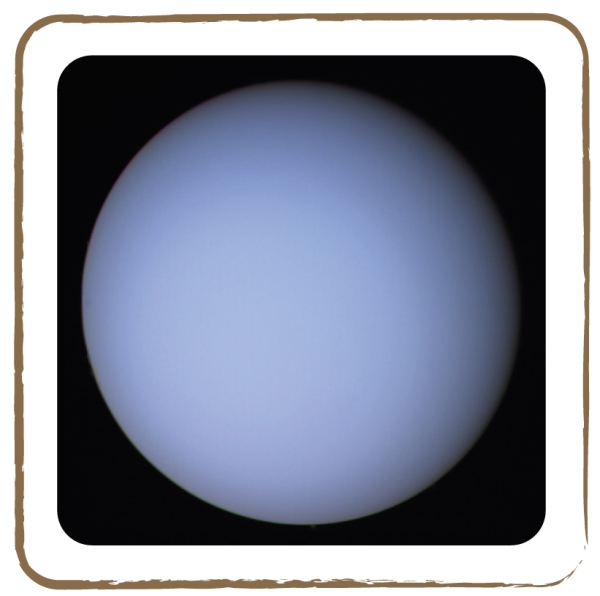
(Credit: NASA)
Neptune
Neptune’s surface has a blue colour, like that of Uranus. White clouds fly over its surface at speeds of over 1000 km/hr. Neptune’s path sometimes crosses the orbit of dwarf planet Pluto. The planet has a thin ring system and 14 known moons (2016).
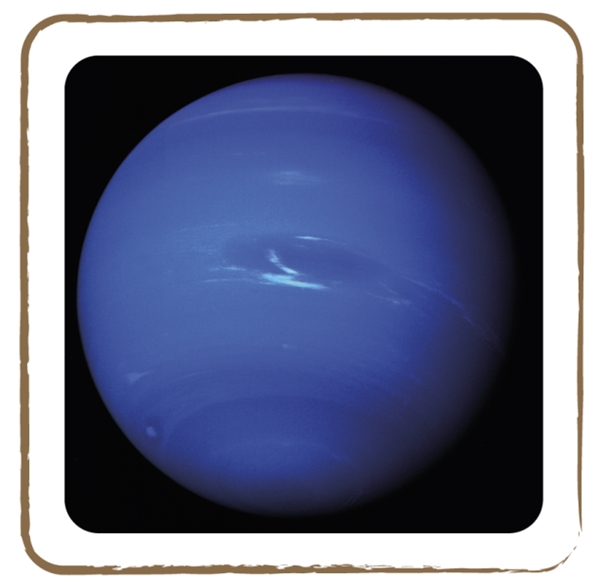
(Credit: NASA)
Dwarf Planet: Pluto
Pluto is composed of ice and rock. In 2006, astronomers decided that Pluto should no longer be classed as a planet but only a dwarf planet, although it is spherical. Due to its low mass, it cannot attract smaller boulders in its vicinity, as the ‘real’ planets do. Pluto has one larger and two smaller moons. Currently, in 2016, there are 4 other planets considered as dwarf planets that could be added to the game on an equal standing with Pluto: Ceres, Haumea, Makemake, and Eris.
Our knowledge of the Solar System
Astronomy research and tools evolve and improve very quickly. Our knowledge about space including our Solar System is extensive but not complete and it is constantly growing. Therefore, data given in the present resource might become incomplete or inaccurate over time. This might be illustrated with Pluto, considered for many years as the ninth planet of the Solar System and today identified as a dwarf planet.
Exoplanets
Exoplanets, also called "extrasolar planets” are worlds orbiting other stars. Thousands of possible exoplanets have been found through ground-based and space-based observatories. Nearly 3,500 have been confirmed; the rest are awaiting further observations so that astronomers can be sure that they are planets. Astronomers estimate that there could be trillions of planets around other stars.
The known exoplanets fall along a range of sizes, masses, and orbital positions. Sizes and masses range from smaller and less massive than Earth to super-Jupiter types of worlds. Orbital positions range from very close to the parent star to very distant. Among other characteristics, astronomers can measure the surface temperatures, orbits, magnetic fields, and colors of exoplanets. As detection methods improve, they will be able to find out more about distant worlds.
Read more about Exoplanets here:
(Source:https://exoplanets.nasa.gov/the-search-for-life/exoplanets-101/)